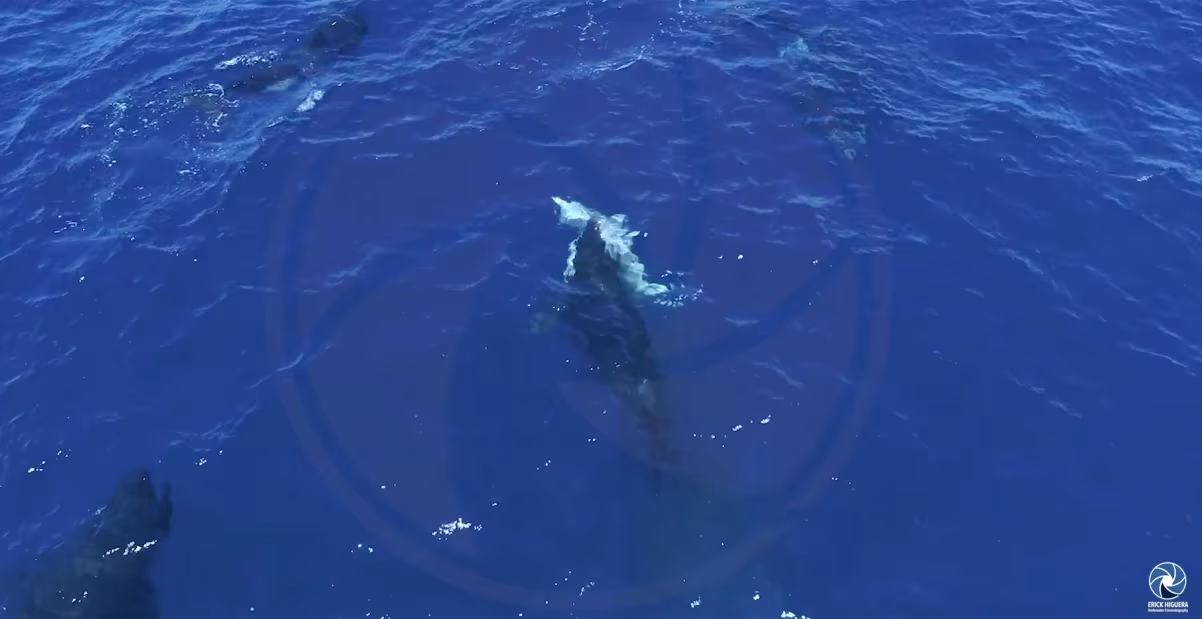Scientists working in Mexico have recorded multiple incidents in which a group of orcas hunt young great white sharks and eat their energy-rich livers.
While orca pods in South Africa, Australia and California have been recorded engaging in similar behavior, this is the first time that it has been documented in Mexico, according to a study published in the journal Frontiers in Marine Science on Monday.
In one incident, recorded in August 2020 using various cameras as well as a drone that captured aerial footage, a group of five female killer whales were recorded working together to attack a young white shark and remove its liver, before sharing it between them.
A few minutes later, the group attacks another young white shark, successfully removing the liver.
Another recording dates to August 2022, when a mixed group of orcas were recorded attacking a young white shark in the same location, then eating the liver.
The study noted that in two of the three recorded predation events the orcas immobilized the shark by flipping it onto its back and deftly avoided bites that could thwart the attack.
“Prey handling and inducing tonic immobility may be more easily achieved in smaller white sharks compared with larger individuals, thereby also reducing risk of bite injury,” the study said.
“Our evidence undoubtedly shows consistency in the repeated assaults and strikes, indicating efficient maneuvering ability by the killer whales in attempting to turn the shark upside down, likely to induce tonic immobility and allow uninterrupted access to the organs for consumption,” it added.
Study author Erick Higuera, a wildlife cinematographer and marine biologist at Conexiones Terramar, a nonprofit organization, told CNN that he was surprised that the orcas hunted white sharks in the same area in different years.
Scientists working in Mexico have recorded multiple incidents in which a group of orcas hunt young great white sharks and eat their energy-rich livers.
While orca pods in South Africa, Australia and California have been recorded engaging in similar behavior, this is the first time that it has been documented in Mexico, according to a study published in the journal Frontiers in Marine Science on Monday.
In one incident, recorded in August 2020 using various cameras as well as a drone that captured aerial footage, a group of five female killer whales were recorded working together to attack a young white shark and remove its liver, before sharing it between them.
Another recording dates to August 2022, when a mixed group of orcas were recorded attacking a young white shark in the same location, then eating the liver.
The study noted that in two of the three recorded predation events the orcas immobilized the shark by flipping it onto its back and deftly avoided bites that could thwart the attack.
By turning the shark over they may induce “tonic immobility,” which makes the shark easier to manipulate, it added.
“Our evidence undoubtedly shows consistency in the repeated assaults and strikes, indicating efficient maneuvering ability by the killer whales in attempting to turn the shark upside down, likely to induce tonic immobility and allow uninterrupted access to the organs for consumption,” it added.
Study author Erick Higuera, a wildlife cinematographer and marine biologist at Conexiones Terramar, a nonprofit organization, told CNN that he was surprised that the orcas hunted white sharks in the same area in different years.
This may suggest that juvenile white sharks are becoming a regular seasonal prey target for orcas, which could “represent a significant additional pressure” on white shark populations, according to the paper.
Alison Towner, a marine biologist from Rhodes University, South Africa, who was not involved in the study, told CNN that the evidence presented by the study was “strong.”
“Drone footage is invaluable here – we first captured and published drone footage of orcas killing white sharks in South Africa, and it changed what we understood about these interactions,” she said.
“This new footage from Mexico lets us compare behaviour across different orca groups and shark populations.”
“It appears to be specific to certain orca groups that have learned this technique, and the impact depends on how frequently the behaviour occurs in a given region,” she said.
“Once the technique exists in a group, it becomes part of their hunting culture,” said Towner, who underlined the targeting of the shark livers, which are rich in nutrients and large relative to the animal’s size.
“For orcas that know how to safely handle a shark, the nutritional reward is very high.”



